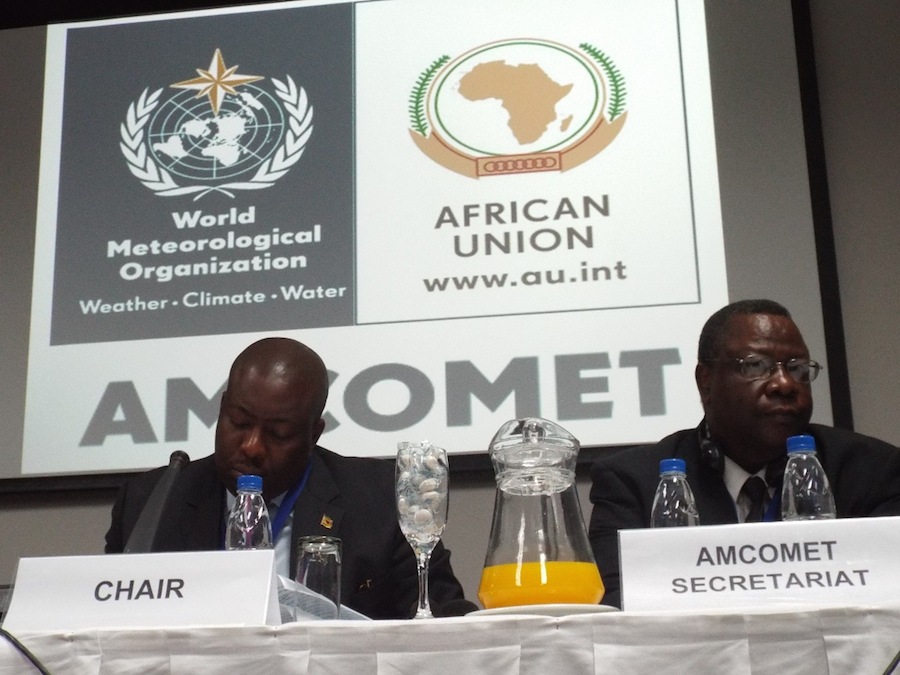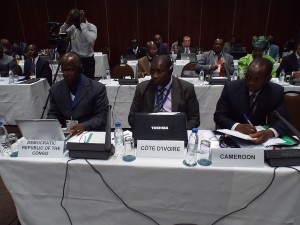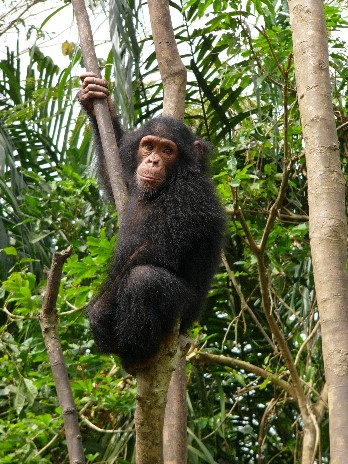
By Elias Ntungwe Ngalame
The creation of a climate center for the Central Africa region to address infrastructure needs against climate disasters is underway.
Environment and climate experts meeting in Yaounde-Cameroon, April 20-25 , 2015, announced the creation of a hydro-meteorological center that will be used for capturing weather and climate data and disseminating information to users for decision support development planning.
The experts say hydro-meteorological services were critical in providing vital information to support economic development and build resilience to climate change in many sectors on the continent.
‘’The creation of a climate change meteorological center in the Central African region is vital and falls within the disaster risk climate change adaptation programme of the United Nation,’’ says Dominique Kuitsouk, focal point catastrophe reduction in the ministry of territorial administration, Cameroon.
The experts say less than 20% of National Meteorological and Hydrological Services (NMHS) are currently providing adequate services for decision-making and development planning in countries in the Central African region mainly due to weak institutional capacity, degraded infrastructure and inadequate service delivery.
The climate change experts in the Yaounde meeting highlighted the dire state of most hydro meteorological services in the region and the huge financial resources required to improve them.
‘’The setting up of these infrastructures requires huge financial resources to ensure quality services and reliable results,’’ says Benard Edward Gomez, expert at the World Meteorological Center.
He however pointed out that with the help of the African Development Bank and the World Bank, some €20 million has been provided to support the creation of African Regional Climate Centers in all the regions in the continent to support the installation of regional advanced retransmission systems, numerical weather prediction systems and institutional capacity development.
The project comes under the auspices of the recently launched ClimDev-Special Fund (CDSF).
According AfDB November 2014 report, a minimum of US $100 to $150 million per year is needed to support operations to modernize the NMH systems in Africa.
The Central African Meteorological Center according to AfDB comes to add to other centers created in the continent. These include the African Centre for Meteorological Applications for Development (ACMAD), the Agro-meteorology and Hydrology Regional Centre (AGRHYMET), IGAD Climate Prediction and Application Centre (ICPAC), the Drought Monitoring Centre (DMC) and the Global Humanitarian Forum (GHF) Meteorological records and data experts say are important tools to prevent climate disasters.
In Cameroon for example farmers are one of the most hit by climate disasters.
Marthe Efoulan, 42 a maize farmer in Meyomessala in the South region of Cameroon narrates her upsetting experience of early rains in the month of February for the past five years that continue to trick farmers to begin planting. No sooner do they begin than the rains disappear putting many farmers in peril.
“The early February rains in Cameroon this year like in the past few years suddenly disappeared and my three weeks maize crops have all withered,” Marthe lamented.
Like Marthe Efoulan, many farmers in Cameroon have continued to fall prey to the changing climate patterns witness in the last few years leading to failure in food crop production and falling famers income.
The Cameroon ministry of agriculture, working in partnership with some NGOs, is to this end, setting up a national climate service programme in pilot centers for training and sensitization of farmers on changing climate challenges.
The secretary general in the ministry of agriculture Ako’ Afan in Cameroon who launched the project in March 2015 says it is an innovative approach that uses participatory learning to help farmers apply climate information to improve on food security. ‘’ The highly variable rainfall calendar since the past few years has made it difficult for farmers to plan, and they take the wrong decision on which crop to plant, and when to plant it, leading to disaster for households and families.
The situation has led to dwindling food crop production in the past few years taking away the county’s pride as the bread basket in the Central African region.
The national climate service programme is an innovation that will help farmers improve on their yields and income,’’ says Ako Afan at the launch

. Cameroon’s economy, the largest in the Central African region is built off the back of agriculture that employs 70% of its workforce and provides 42% of the country’s gross domestic product and 30% of its export revenue according to government statistics. Yet production of food crop has a darker legacy in the past five years with farmers paying the heavy cost due to harsh weather and lack of access to climate change information.
Part of the solution the government pointed out is improved forecasting and more information about historical climate patterns, together with wider options for adapting to those patterns. The challenge, though, is how to spread the information to farmers and help them apply it in their particular situations.
The project will enable farmers in all the ten regions in the country receive climate data together with participatory tools to help them evaluate their options and make on-farm decisions. Farmers are in turn expected to report any changing planting practice, choose new crops and varieties to increase their food security. The approach the government says will be facilitated by agricultural extension agents and some NGOs to provide climate information and decision-making tools to farmers as early as 2015.
It is hoped that the Meteorological and Hydrological Services (NMHSs) of the Central African region will be a big boost to the project in Cameroon as it will help improve access to weather information in real time and facilitate effective decision-making by the governments of the different countries in the region.












